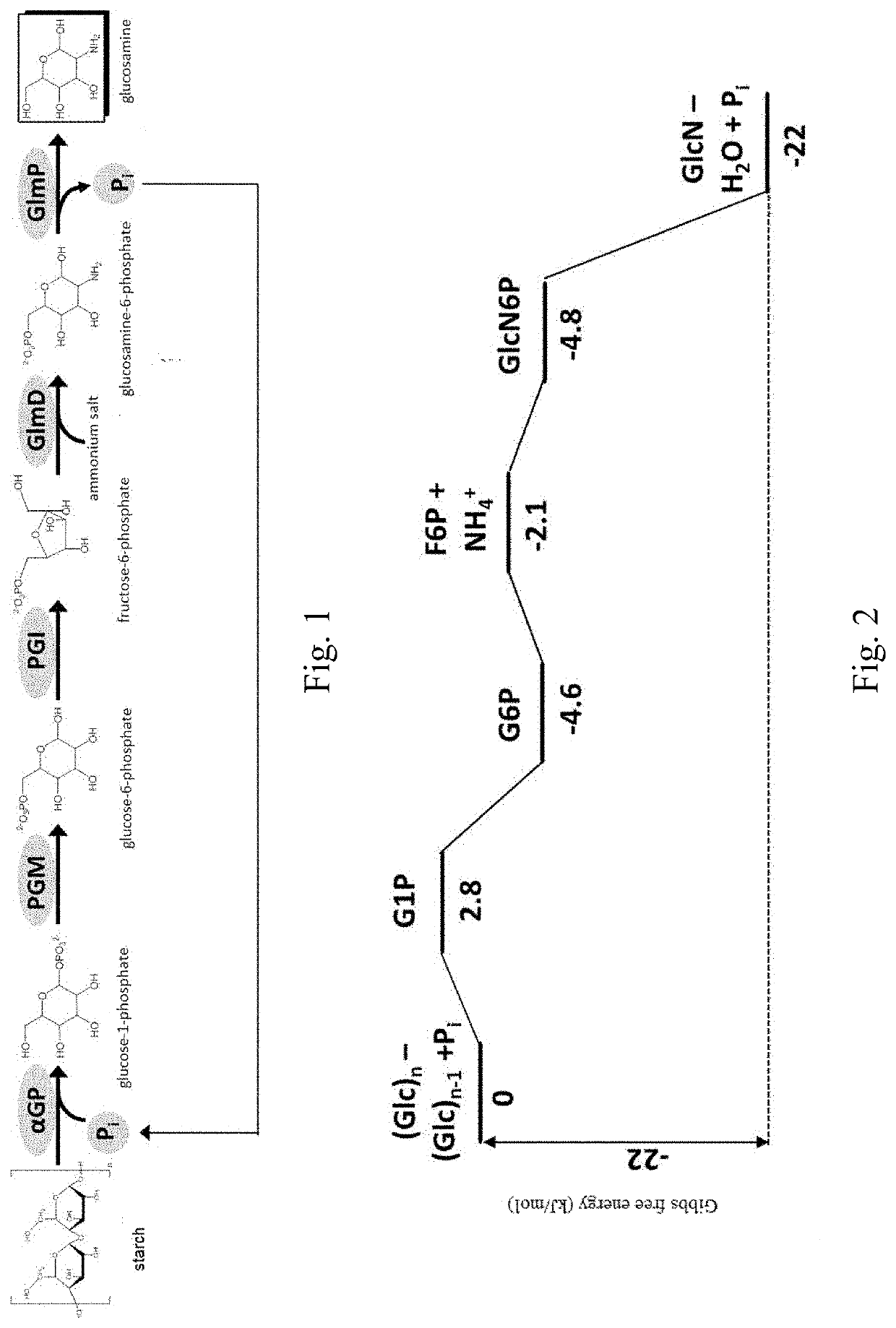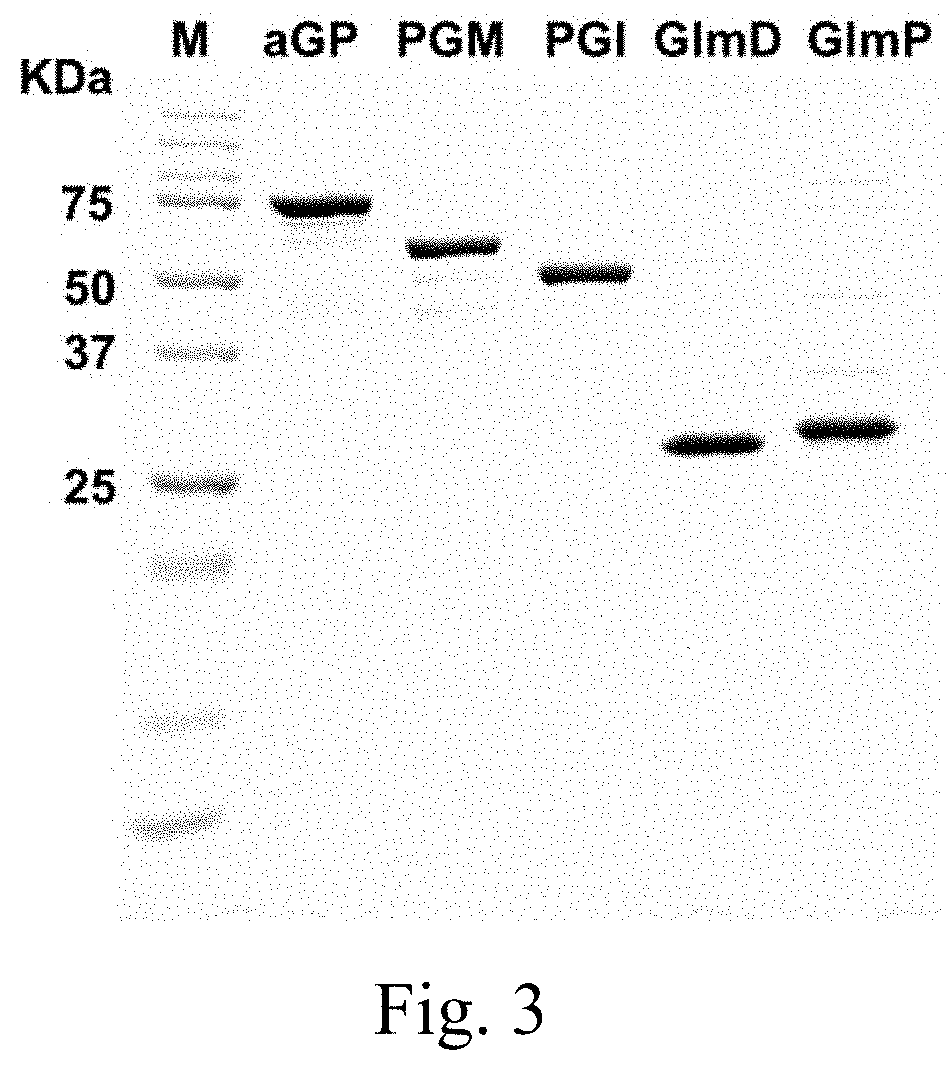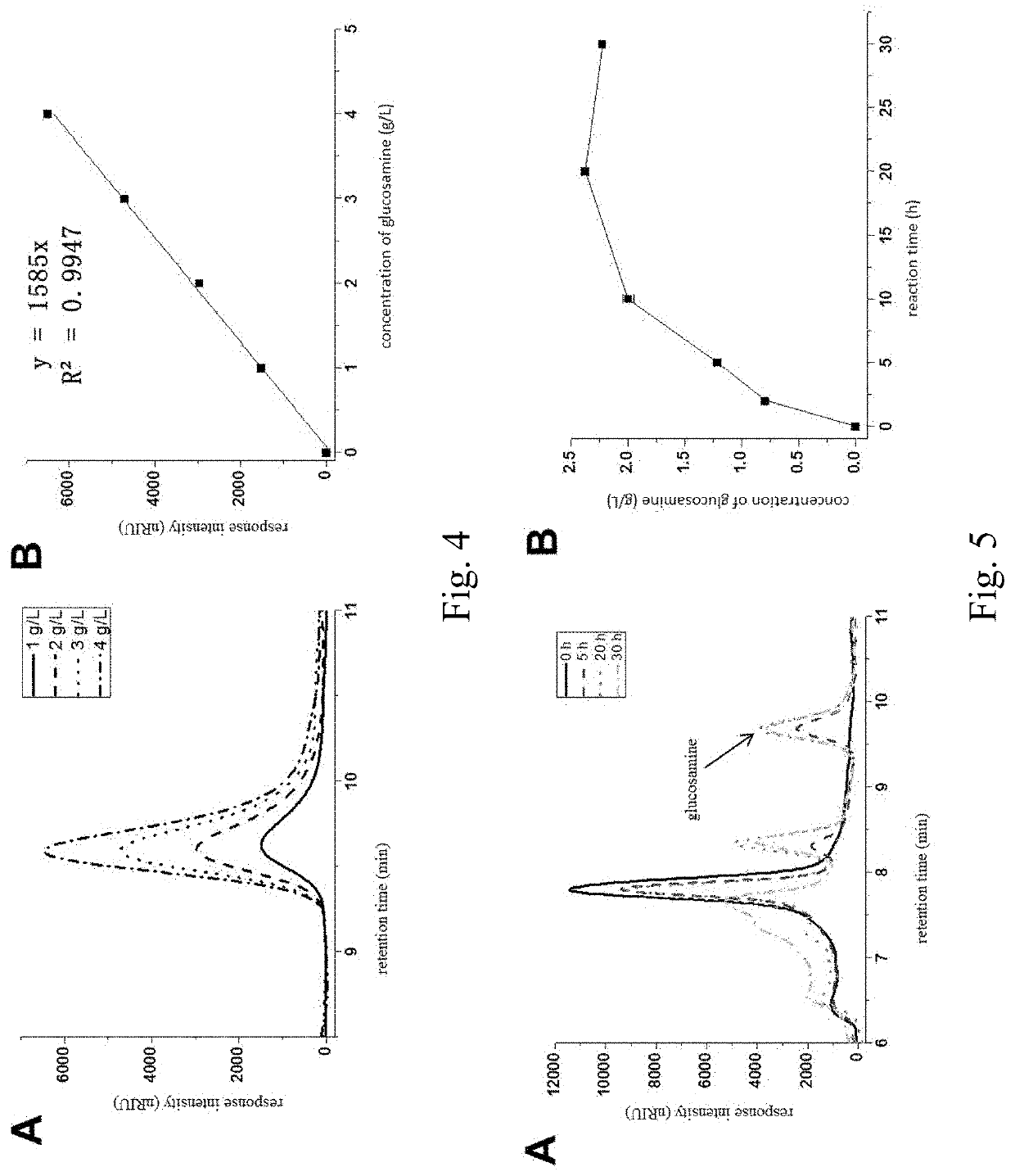Enzymetic preparation of glucosamine
- Summary
- Abstract
- Description
- Claims
- Application Information
AI Technical Summary
Benefits of technology
Problems solved by technology
Method used
Image
Examples
example 1
Determination of Enzyme Activity in the Enzymatic Preparation of Glucosamine
[0069]The catalytic pathway of converting starch to glucosamine in an in vitro enzymatic system is shown in FIG. 1, wherein the enzyme capable of catalyzing the dephosphorylation takes glucosamine-6-phosphate phosphatase as an example. FIG. 2 shows the Gibbs energy change among the intermediates in the enzymatic pathway of converting starch to glucosamine. In this example, (1) α-glucan phosphorylase is derived from Escherichia coli (Uniprot No. A0A0A0HB49); (2) phosphoglucomutase is derived from Clostridium thermocellum (Uniprot No. A3DEW8); (3) phosphoglucose isomerase is derived from Clostridium thermocellum (Uniprot No. A3DBX9); (4) glucosamine-6-phosphate deaminase is derived from Bacillus subtilis (Uniprot No. 035000); (5) the enzyme capable of catalyzing the dephosphorylation is glucosamine-6-phosphate phosphatase derived from Bacteroides thetaiotaomicron (Uniprot No. Q8A759). The genomic DNAs are avai...
example 2
In Vitro Enzymatic Preparation of Glucosamine from Soluble Starch
[0075]This example prepared glucosamine from soluble starch by in vitro enzymatic biosystem. First, five enzymes were recombinantly expressed: αGP from Escherichia coli, PGM from Clostridium thermocellum, PGI from Clostridium thermocellum, GlmD from Bacillus subtilis, and GlmP from Bacteroides thetaiotaomicron (Table 2).
TABLE 2Information of enzymes used for the in vitro enzymaticpreparation of glucosamineSpecific activityEnzymeat 37° C.EnzymeNo.Source(U / mg)α-glucan 2.4.1.1E. coli5.6phosphorylase (αGP)phosphoglucomutase 5.4.2.2C. thermocellum20(PGM)phosphoglucose 5.3.1.9C. thermocellum396isomerase (PGI)glucosamine-6-phosphate3.5.99.6B. subtilis10deaminase (GlmD)glucosamine-6-phosphate—B.3phosphatase (GlmP)thetaiotaomicron
[0076]Glucosamine was quantitatively analyzed by high performance liquid chromatography (HPLC). The chromatographic column used was an amino column, the mobile phase was 80% acetonitrile aqueous soluti...
example 3
In Vitro Enzymatic Preparation of Glucosamine from IA-Treated Soluble Starch
[0079]Starch is polysaccharide having α-1,4 and α-1,6 mixed bonding, and thus cannot be completely hydrolyzed by α-glucan phosphorylase. Isoamylase (IA, EC 3.2.1.68) can hydrolyze the α-1,6 glycosidic bond in starch, and thus contributes the phosphorylation of the substrate by the α-glucan phosphorylase and increases the yield of glucosamine.
[0080]In this example, the isoamylase was derived from Sulfolobus tokodaii (UniProt No. Q973H3). The expression vector pET20b-StIA reported in the literature (Cheng, K. et al. Doubling Power Output of Starch Biobattery Treated by the Most Thermostable Isoamylase from an Archaeon Sulfolobus tokodaii. Sci. Rep. 5: 13184) was introduced into E. coli BL21 (DE3), to perform protein expression and purification.
[0081]To a 5 mM sodium acetate buffer (pH 5.5) containing 100 g / L soluble starch, 0.5 mM magnesium chloride and 1 U / mL isoamylase were added, and the mixture was allowed...
PUM
| Property | Measurement | Unit |
|---|---|---|
| Temperature | aaaaa | aaaaa |
| Temperature | aaaaa | aaaaa |
| Temperature | aaaaa | aaaaa |
Abstract
Description
Claims
Application Information
 Login to View More
Login to View More - R&D
- Intellectual Property
- Life Sciences
- Materials
- Tech Scout
- Unparalleled Data Quality
- Higher Quality Content
- 60% Fewer Hallucinations
Browse by: Latest US Patents, China's latest patents, Technical Efficacy Thesaurus, Application Domain, Technology Topic, Popular Technical Reports.
© 2025 PatSnap. All rights reserved.Legal|Privacy policy|Modern Slavery Act Transparency Statement|Sitemap|About US| Contact US: help@patsnap.com



